
Content
Welcome to the Club of Amsterdam Journal. The Web and Tourism: The Future of Online Travel: “ Let’s face it: more people travel now than ever before. That sounds trivial and obvious, but it has enormous impact on the sustainability of our planet, geopolitical issues, infrastructure and much more. But what has enabled this massive growth and what will it mean for the average person in the future? One enabling factor has been the huge change in travel distribution resulting from the internet and the worldwide web. We have moved from a closed, tightly controlled system of human travel agents to an almost limitless source of travel suppliers and options online, that anyone with a credit card can book themselves. Where will this take us in the world of Google, MySpace, Kayak and emerging technologies?.” – Marc Bolick, Dmarc8 International Mark is a speaker at our next Season Event about the future of Tourism – May 31st!: Felix Bopp, editor-in-chief |
UNWTO calls for promoting sustainable tourism practices and policies in Central and Eastern Europe
 | The World Tourism Organization (UNWTO/OMT), a specialized agency of the United Nations, is a leading international organization in the field of tourism. It serves as a global forum for tourism policy issues and practical source of tourism know-how. |
| International Tourism growth in Europe has exceeded expectations over the last three years, with the Baltic States outstanding as strong performers. UNWTO’s long-term global forecast of 4% yearly growth until 2020 is likely to be matched or even exceeded in this region, assuming that GDP growth is maintained. Particularly Lithuania has experienced a considerable increase of both its share of arrivals and receipts within Central and Eastern Europe.This strong economic performance in Central and Eastern Europe goes hand in hand with the increasing recognition of ensuring sustainable growth in its environmental, social and economic dimensions, based on solid institutional and management structures.These issues were addressed during the International Seminar on Sustainable Development of Tourism in Central and Eastern Europe organized by UNWTO and hosted by Lithuania, from 28 February-1 March, 2007 in the capital in Vilnius. The event brought together more than 200 participants from 20 European countries, ranging from tourism policy makers, managers at national, regional and destination levels, private sector and academia representatives. Relevance for policy-makers The principles of sustainable development, as often expressed through Sustainable Development Strategies, have been embraced by most countries and are finding their way into national policies.UNWTO considers the need for policy-makers to regard the Travel & Tourism sector as a social activity which cross-relates to vital sectors of the economy, with important implications and effects on areas such as employment, transport or infrastructure. Therefore the general sustainability approach should also be streamlined into tourism policies, bearing in mind the steady growth of tourism in the coming years.This favourable inbound and revenue perspective should foster the initiative to further develop the natural and cultural resources of Central and Eastern Europe. These assets represent a basis for sustainable tourism. The challenge for policy-makers lies in managing the increasing development pressure in the area, which might pose a threat to natural and cultural resources. Key conclusions The achievement of sustainability – as a balance between environmental, economic and social aspects – has to build on a set of institutional and management structures. Therefore creating a solid institutional framework, which in itself is a long-term process, is a necessary condition to reach sustainability objectives.Among the specific challenges underscored, the Seminar paid particular attention to:reducing the seasonality of demand,maintaining and enhancing community prosperity in the face of change,minimising resource use and the production of waste; andconserving and giving value to natural and cultural heritage.The key conclusions of this UNWTO Seminar are varied and comprise general and specific aspects, among which the following stood out: Sustainability is a cross-border task: Regional co-operation is relevant to improve the results, as the Pan Baltic approach demonstrates. The participation of a number of institutions and networking processes could turn this region into a pilot area for cooperative sustainable tourism. Strategies and tools: Experts underline the critical importance of effective land use planning and development control. These types of measures must be backed by effective legal empowerment. Voluntary measures: Standards and recognition through certification, such as the Blue Flag award scheme, have proven to be a useful approach. This example proves the success of a high profile awareness scheme amongst tourists, which in turn persuades destinations to maintain required standards. Consumer patterns and behaviour: In order to decrease seasonality and other negative impacts, demand can be influenced at the source, for instance through the staggering of school holidays or similar measures. At the same time, consumer behaviour can also be influenced by the nature of the product, for example by improving the design, standards and presentation of accommodation .Monitoring success: The tracking of the results of the steps taken serves as a feedback on the implemented measures and policies and are an important step towards achieving sustainability. As this will require regular surveys, the authorities will have to commit and provide the needed resources. Environmental trade-offs: The effect of climate change might have specific implications for the pattern of demand, the location of new development and pressure on natural resources. While natural areas can host diverse activities, some of these might in turn threaten the environment or even conflict with each other. These trade-offs need to be addressed by improved management plans. Rural impact: Tourism can make a strong socio-economic contribution in rural areas, such as substantive complementary income alongside more traditional activities. The quality of tourism services in rural areas need to be improved, alongside with the know-how in small tourism businesses and staff training in many protected areas with little experience of tourism. Cultural heritage: Uncontrolled tourism development can have negative impacts on cultural heritage sites, but if adequately planned and managed it can promote awareness and support for their conservation, provide business opportunities for local residents and a high quality experience for tourists. The way forward All these key conclusions and aspects lead to the challenges facing the development of sustainable tourism.The Seminar concluded that there is a need not to repeat past mistakes from developments in other parts of Europe, where the short-term perspectives of increasing revenues prevented sound planning and protection, hence making a sustainable approach much more difficult or even less likely.In this regard, the European Union’s Tourism Sustainability Group, also supported by UNWTO, has set out a policy and action framework in order to make tourism more sustainable in Europe.The experts gathered at the UNWTO Seminar agreed for the clear need to create sustainable tourism strategies, which have to involve all stakeholders in the process, both at a national and local level. Furthermore, strategies at different levels must relate to each other and be mutually consistent.UNWTO considers that there is considerable room for improvement and a real chance to build principles of sustainability into the design and implementation of tourism policies. |
Media LAB
LAB on MEDIA and Human Experience
An immersed experience of a Do-Tank
May 29 & 30, 2007
Location: Girona near Barcelona, Spain
Max. 20 Delegates
Moderated by Humberto Schwab, Director, Club of Amsterdam, Innovation Philosopher
and the Thought Leaders
Laurence Desarzens, urban communicator, beatmap.com
Media & communication specialist for lifestyle companies
Paul F.M.J. Verschure, ICREA research professor, Technology Department, University Pompeu Fabra
Psychologist. Specialist for wheeled and flying robots, interactive spaces and avatars
Ricardo Baeza-Yates, Director, Yahoo! Research
Specialist for content and structure organization of a website and for blogs, vlogs and social networks
Rudy de Waele, Founder, M-trends.org
Wireless communication expert
News about the future of Tourism

The world’s biggest industry ever — but poorly managed for the environment
by Group of Experts on Scientific Aspects of Marine Environmental Protection (GESAMP)
Tourism is the world’s biggest industry — indeed the biggest the planet has ever seen — and it is growing rapidly. The number of international tourists worldwide grew from 170 million in 1971 to 635 million in 1998, while the amount they spent soared from US$ 21 billion to US$ 439 billion. By 2020, the World Tourism Organisation predicts, 1.5 billion of them will be spending $2 trillion a year — or over $5 billion every day. Meanwhile, at least three times as many people take holidays within their own countries, predominantly in developed nations. Tourism is a big, sometimes dominant, contributor to the GDPs of many nations, such as small island developing countries. It already accounts for a quarter of the total economy of the Caribbean, and provides a fifth of all its jobs.

Global List of University Ecotourism and Sustainable Tourism Programs
The International Ecotourism Society has made available a global list of university degree programs and courses dedicated to ecotourism and sustainable tourism.
Club of Amsterdam blog
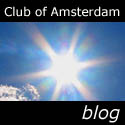 | Club of Amsterdam blog http://clubofamsterdam.blogspot.com April 20: Aspects of Mobility April 4: Lifestyle and New Media March 20: The Future of the Web March 13: “We Media” |
News about the Future

The World Future Council is a new voice in the global political arena – one that draws on our shared human values to champion the rights of future generations, and works to ensure that humanity acts now for a sustainable future.
Despite having the means to tackle many of the problems we currently face, the existing global system of governance has so far seemed incapable of addressing them, often failing to adopt available solutions. The World Future Council will identify and promote successful policies, using existing networks to connect with over 25,000 parliamentarians, and more than 8,000 civil society organizations worldwide, arguing not for an ideology or a nation or a religion or a political party but for one thing only: our common future.

Technology that scans and reads printed material to the blind is nothing new, but this personal reader is the first handheld device to do the job. Combining a state-of-the-art digital camera with a personal data assistant, the Kurzweil–National Federation of the Blind Reader puts the best available character recognition software together with text-to-speech conversion technology, all in the palm of your hand.
Hold the Reader’s camera over print – a restaurant menu, directions, or a memo from your boss – and snap a picture. In seconds you can hear the contents of the printed document in clear synthetic speech. Scan, read, and discard pages; store them for later reading; or transfer to a computer or Braille-aware PDA. The Reader even has a headphone jack so you won’t disturb your neighbors.
Sustainable Energy: A Framework for Decision Makers
The fast-growing bioenergy industry offers many opportunities, but also involves a number of trade-offs and risks, the United Nations said today in its most comprehensive review of the likely impact of the emerging bioenergy market.
“The economic, environmental and social impacts of bioenergy development must be assessed carefully before deciding if and how rapidly to develop the industry and what technologies, policies and investment strategies to pursue,” the report warned.
The document, Sustainable Energy: A Framework for Decision Makers was prepared by UN-Energy, a group of all UN agencies programmes and organizations working in the area of energy. It was sponsored by the Rome-based UN Food and Agriculture Organization.
Purpose of the study was to help ensure that “the energy needs of people are met and the local and global environment is adequately protected,” said UN-Energy Chair Mats Karlsson of the World Bank. “We hope to use the collective strength of the UN system to affect change”.
Key issues
The report pointed out the many benefits of bioenergy systems in relation to poverty alleviation, access to energy services, rural development and rural infrastructure. It reviewed the likely impact of bioenergy in terms of food security, climate change, biodiversity and natural resources, employment and trade. It also identified the vital points decision makers need to consider and stressed that, “Unless new policies are enacted to protect threatened lands, secure socially acceptable land use, and steer bioenergy development in a sustainable direction overall, the environmental and social damage could in some cases outweigh the benefits”.
In an apparent reference to the use of some grains as a biofuel feedstock, UN-Energy noted, “In general, crops that require high fossil energy inputs (such as conventional fertilizer) and valuable (farm) land, and that have relatively low energy yields per hectare, should be avoided.”
Sustainable bioenergy use
Moreover, even “sustainably”-produced energy crops could have negative impacts if they replaced primary forests, “resulting in large releases of carbon from the soil and forest biomass that negate any benefits from biofuels for decades,” the report said.
To minimize greenhouse gas emissions associated with bioenergy production, policy makers needed to safeguard virgin grasslands, primary forests and other lands with high nature value, UN-Energy recommended. Governments should also encourage the use of sustainable bioenergy production and management practices. An international certification scheme, including greenhouse gas verification, should be set up to ensure that bioenergy products, and biofuels in particular, meet environmental standards all the way from fields to fuel tanks.
On food security, the report said that the availability of adequate food supplies could be threatened by biofuel production as land, water and other resources were diverted from food production. Similarly, food access could be compromised by higher basic food prices resulting from increased bioenergy feedstock demand, thus driving the poor and food insecure into even greater poverty.
Growing opportunity
On the other hand the market for biofuel feedstock offers new and rapidly growing opportunity for agricultural producers,” the report said. “Modern bioenergy could make energy services more widely and cheaply available in remote rural areas, supporting productivity growth in agriculture and other sectors with positive implications for food availability and access”.
Modern bioenergy can also help to meet the needs of the 1.6 billion people worldwide who lack access to electricity in their homes, and the 2.4 billion who rely on straw, dung and other traditional biomass fuels to meet their energy requirements.
Overall, in taking decisions, policy makers “should ensure that food security considerations are given priority,” the report stressed.
Bringing down trade barriers
The document was critical of tariff barriers currently erected against ethanol imports by some countries.
Impeding imports of more efficiently produced biofuels from abroad while simultaneously mandating the blending of biofuel with fossil fuels at home could divert more land than necessary from food production, it said.
Involving farmers
As to the implications for agriculture in general, the report noted that, “At their best, liquid biofuel products can enrich farmers by helping to add value to their products. But at their worst, biofuel programmes can result in concentration of ownership that could drive the world’s poorest farmers off their land and into deeper poverty.”
Mixed production
Most likely, “the biofuel economy of the future will be characterized by a mix of production types, some dominated by large, capital-intensive businesses, some marked by farmer co-ops that compete with large companies … and some where liquid biofuels are produced on a smaller scale and used locally.
“Regardless of the scale of production, however, one thing is clear: the more involved farmers are in the production, processing and use of biofuels, the more likely they are to share in the benefits.”
Kitchen killer
On health, UN-Energy said that modern bioenergy held out the promise of dramatically reducing the death toll caused in developing countries by the “kitchen killer” – smoke inhalation from cooking with fuelwood or traditional biomass, which is responsible for more fatalities each year than malaria. Women could also be freed from the drudgery of collecting firewood, thus providing them with greater opportunities for education and employment.
Next Season Event
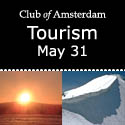 the future of Tourism Thursday, May 31 , 2007 Registration: 18:30-19:00, Conference: 19:00-21:15 Where: Info.nl, Sint Antoniesbreestraat 16, 1011 HB Amsterdam [Next to Nieuwmarkt] With Joachim Willms, Managing Director, Tourism Futures Institute The Future Trends in Tourism: Global Perspectives Wybren Meijer, Futureconsult Main Drivers in the Future of Tourism Martin Nydegger, Director, Switzerland Tourism, The Netherlands Switzerland’s reaction to the climate change challenge Marc Bolick, Dmarc8 International The Web and Tourism: The Future of Online Travel Moderated by Joep Dirven, Partner & Consultant, X-markt Moderator | ||
| Supporter |
Recommended Book
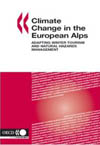
Climate Change in the European Alps: Adapting Winter Tourism and Natural Hazards Management
by Shardul Agrawala
This report presents the first systematic cross-country analysis of the effects of climate change on snow-reliability in the European Alps. Following some of the warmest years on record in the last 500 years, climate model projections show even greater changes in the region in coming decades. Less snow at low altitudes and receding glaciers and melting permafrost higher up will have a significant impact on snow tourism activities, and on the management of natural hazards. The implications of the assessment extend beyond the European Alps to other mountain systems which may face similar climate and contextual challenges, for example in North America, Australia and New Zealand.
Scientists discover new life in the Antarctic deep sea
Scientists have found hundreds of new marine creatures in the vast, dark deep-sea surrounding Antarctica. Carnivorous sponges, free-swimming worms, crustaceans, and molluscs living in the Weddell Sea provide new insights into the evolution of ocean life.
Reporting this week in the journal Nature, scientists describe how creatures in the deeper parts of the Southern Ocean – the source for much of the deep water in the world ocean – are likely to be related to animals living in both the adjacent shallower waters and in other parts of the deep ocean.
A key question for scientists is whether shallow water species colonised the deep ocean or vice versa. The research findings suggest the glacial cycle of advance and retreat of ice led to an intermingling of species that originated in shallow and deep water habitats.
Lead author Professor Angelika Brandt from the Zoological Institute and Zoological Museum, University Hamburg says,
“The Antarctic deep sea is potentially the cradle of life of the global marine species. Our research results challenge suggestions that the deep sea diversity in the Southern Ocean is poor. We now have a better understanding in the evolution of the marine species and how they can adapt to changes in climate and environments.”
Dr Katrin Linse, marine biologist from British Antarctic Survey, says,
“What was once thought to be a featureless abyss is in fact a dynamic, variable and biologically rich environment. Finding this extraordinary treasure trove of marine life is our first step to understanding the complex relationships between the deep ocean and distribution of marine life.”
Three research expeditions, as part of the ANDEEP project (Antarctic benthic deep-sea biodiversity), onboard the German research ship Polarstern took place between 2002 and 2005. An international team from 14 research organisations investigated the seafloor landscape, its continental slope rise and changing water depths to build a picture of this little known region of the ocean. They found over 700 new species
Giant amphipod
Most of the deep-sea crustaceans are less than 1 cm in size, but this species of Paraceradocus can reach more than 5 cm in length. The white colour is an adaptation to the deep sea as related species from the Antarctic shallow waters are bright red.
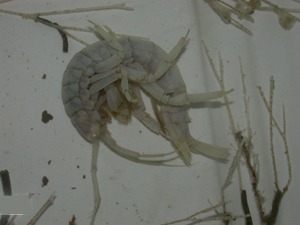
The charismatic crustacean family Epimeriidae have successfully developed new species in Antarctica. This pink species is new to sciences and the first deep sea member of this group.

Carniverous moonsnail
This carnivorous moonsnail lives in the Antarctic deep sea. It can detect food from a wide distance and will moved towards it. Polyps, covering its shell, use the moonsnail as transport to food sources.
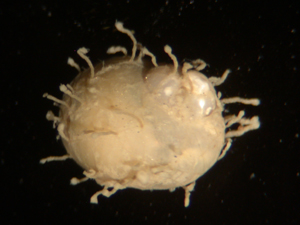
Gastropod
Small and new species of gastropod that lives on the seafloor of the Antarctic deep sea. The shell and the snail within it can be seen through a layer of mantle tissue that protects the shell. Altought living in dark depth, this species has developed eyes.

Marine Biologist Katrin Linse with a sea spider she collected from the deep sea.

The world’s smallest published book
It’s a big feat of the tiniest proportions. Simon Fraser University’s Nano Imaging Lab has produced the world’s smallest published book.
The only catch – you’ll need a scanning electron microscope to read it.
At 0.07 mm X 0.10 mm, Teeny Ted from Turnip Town is a tinier read than the two smallest books currently cited by the Guinness Book of World Records: the New Testament of the King James Bible (5 X 5 mm, produced by MIT in 2001) and Chekhov’s Chameleon (0.9 X 0.9 mm, Palkovic, 2002).
By way of comparison, the head of a pin is about 2 mm.
The production of the nanoscale book was carried out at SFU by publisher Robert Chaplin, with the help of SFU scientists Li Yang and Karen Kavanagh. The work involved using a focused-gallium-ion beam and one of a number of electron microscopes available in SFU’s nano imaging facility.
With a minimum diameter of seven nanometers (a nanometer is about 10 atoms in size) the beam was programmed to carve the space surrounding each letter of the book.
The book is made up of 30 microtablets, each carved on a polished piece of single crystalline silicon, and has its own International Standard Book Number, ISBN-978-1-894897-17-4.
The story, written by Chaplin’s brother Malcolm Douglas Chaplin, is a fable about Teeny Ted’s victory in the turnip contest at the annual county fair.
Considered an intricate work of contemporary art, the book is available in a signature edition (100 copies) from the publisher, through the SFU lab.
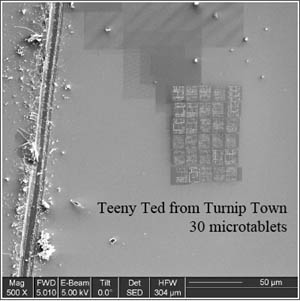

Agenda

| Our Season Events for 2006/2007 are on Thursdays: |
| the future of Tourism May 31, 2007, 18:30 – 21:15 Taste of Diversity June 28, 2007, 18:30 – 21:15 |

| LAB in Girona near Barcelona, Spain, moderated by Humberto Schwab: LAB on MEDIA and Human Experience May 29 & 30, 2007 |
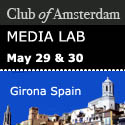
Club of Amsterdam Open Business Club
 | Club of Amsterdam Open Business Club Are you interested in networking, sharing visions, ideas about your future, the future of your industry, society, discussing issues, which are relevant for yourself as well as for the ‘global’ community? The future starts now – join our online platform … |








Customer Reviews
Thanks for submitting your comment!